This post will describe a detailed troubleshooting procedure for the White Light On Motherboard. Prior to the development of HDMI and DisplayPort, computers frequently used VGA, usually referred to as Video Graphics Array. The white light on the ASUS motherboard indicates a failed GPU connection. A broken graphics card, incompatible hardware, a loose connection, and other issues cause this.
White Light On Motherboard
A white light on your motherboard indicates an issue with the connection between your graphics card and motherboard.
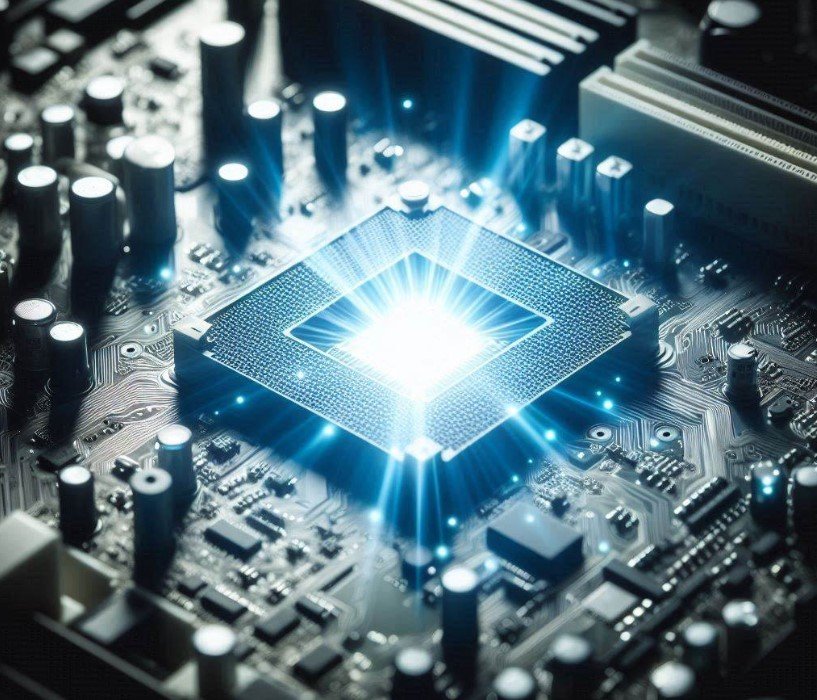
What Does A White Light On Your Motherboard Mean?
A white LED on your motherboard that occasionally has the label “VGA” shining on it usually indicates that there are issues with the graphics card’s detection.
This white light, however, could also indicate that your CPU is mounted incorrectly or that one or more of the CPU’s pins are bent or damaged (fixing CPU pins is a challenging task).
Although these are the most common problems, motherboard manufacturers don’t always standardize these things, so a white light on your motherboard could indicate something different, particularly if it has a different label (if it refers to a DRAM component, for instance, you probably related to that).
What Does A White Boot Light Mean?
The “BOOT” light on the motherboard shows that the machine is booting. Usually, an LED indicator on the motherboard or near the connectors displays boot process information.
Your computer boots through several checks and processes. Some of these tasks are setting up the hardware, loading the OS, and getting ready for user contact.
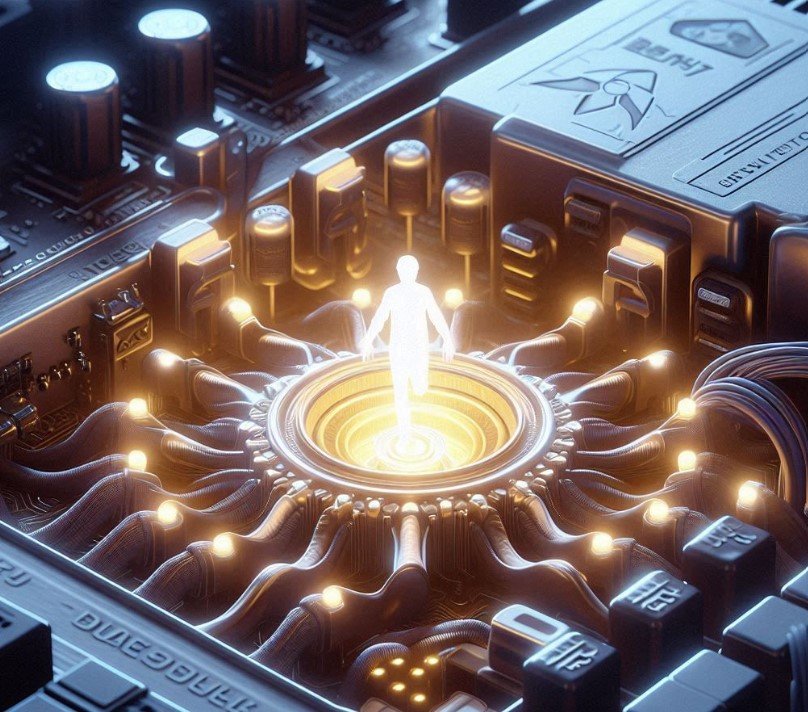
This step turns on the BOOT light, signaling that the motherboard is booting. If the light stays on, the machine may be having booting issues. These difficulties may include hardware failures, incompatible configurations, damaged BIOS settings, or operating system faults.
A properly operating system turns off the BOOT light after booting and preparing the machine. Suppose the light stays on or blinks in a specific pattern. In that case, it may signal an error code that can be checked against the motherboard’s manual or manufacturer’s documentation to determine the issue.
The “BOOT” light’s significance and behavior differ by motherboard manufacturer and model. For more accurate and extensive information regarding a motherboard’s “BOOT” light, consult the manufacturer’s manual or website for documentation and assistance.
Why There Is A Constant White LED Light On Motherboard?
A white light on your motherboard may indicate problems with your graphics card or display output, so it’s essential to notice it.
This extensive tutorial seeks to give you a complete understanding of the white light problem and provide you with practical troubleshooting of white light on motherboard techniques to fix it.
By examining potential causes, providing detailed troubleshooting methods, and supplementary resources, this article will enable you to identify and resolve the white light issue immediately. Your motherboard’s white light shouldn’t interfere with your ability to use a computer.
How to Fix White Light on Motherboard?
Following are the steps to fix the white light on the motherboard:
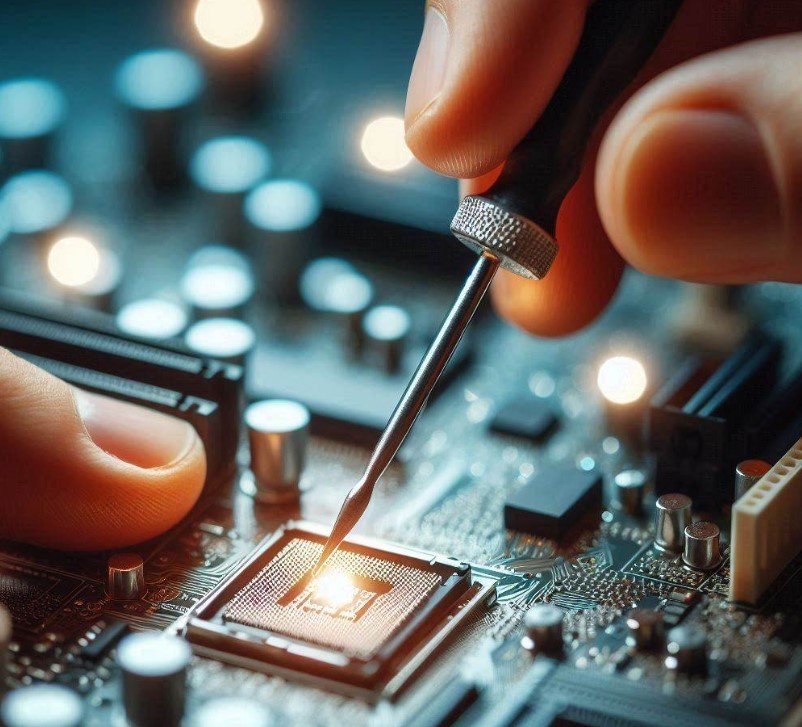
Cable connection check
Check all display cables to the graphics card and monitor. Plug both ends of the wires tightly. Check connectors for looseness or damage. Try various cables or connectors to rule out a faulty cable causing the white light issue.
Graphics Card Power Supply Verification
Check the PSU-to-graphics card power connectors for appropriate seating and power. Make sure all electrical cords are secure. A lousy power connection can prevent the graphics card from working, so try various power connectors or PSUs.
System reboot
Restarting the machine can fix temporary difficulties. Try restarting the computer to see if the white light stays on. The graphics card and the display link become stable after a restart.
Driver updates for graphics cards
Visit your graphics card manufacturer’s website to download the newest drivers. Install the latest drivers and follow the instructions. Old or incompatible drivers can conflict with the graphics card, causing a white light. Driver updates fix compatibility and boosts performance.
BIOS Update Checking
Check the motherboard manufacturer’s website for BIOS upgrades. Graphics card compatibility and functionality may improve with updated BIOS versions. Follow manufacturer BIOS update instructions carefully. Warning: incorrect BIOS updates can cause system instability.
Reseating the Graphics Card
Power off and unplug the system to reinstall the graphics card. Open the computer case to find the graphics card. Slowly remove and secure the graphics card from the PCIe slot. Set it in the slot. A loose graphics card connection can cause the white light. Resetting it can repair it.
Testing Graphics Cards on Different Systems
Try installing the graphics card in another compatible system to see whether the white light continues. The motherboard or power source may be broken if the other computer doesn’t have the white light. Further troubleshooting or professional help may be needed to pinpoint the issue.
Resetting CMOS
If there are problems with compatibility or setup, clearing the motherboard’s CMOS settings might help. It usually requires finding the CMOS reset jumper or disconnecting the battery. Follow the steps carefully to reset the CMOS and restore default settings.
Hardware Conflict Checking
Conflicting components like expansion cards or integrated graphics can affect graphics card performance. Disable conflicting devices or change resource allocations to keep the graphics card running well.
How To Fix ASUS Motherboard White Light?
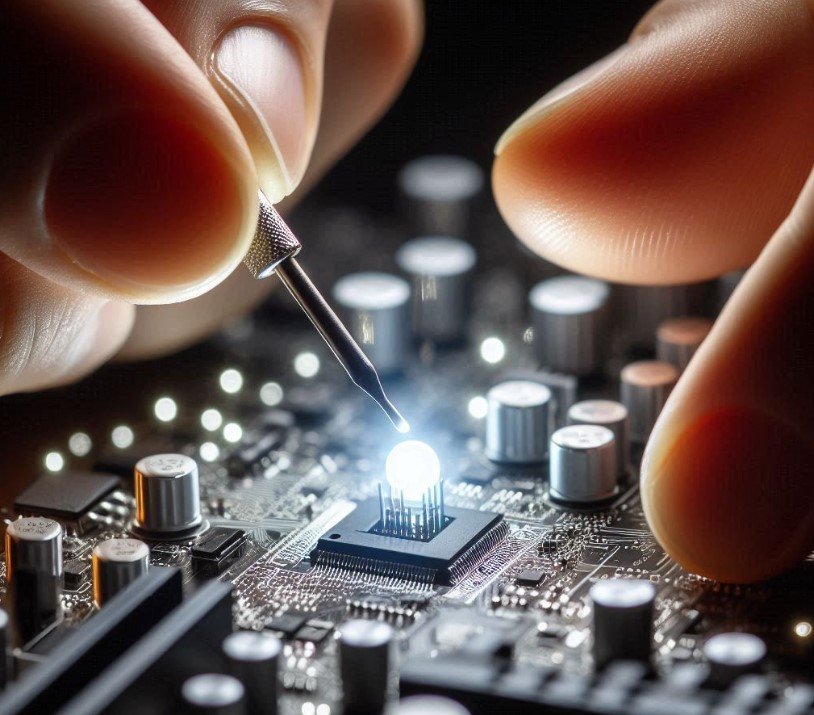
Fix 1: Verify Every Connection
ASUS motherboard white light might result from electrical flow disruption caused by loose connections or debris in the power connector. In this situation, you can use compressed air to clear dust accumulation and confirm that the power supply unit produces enough watts.
Fix 2: Reinstall the Graphics Card
These pictures that you see on your screen come from the graphics card. Occasionally, ASUS motherboard white light can also be caused by a loose graphics card-to-motherboard connection. It can be removed, cleaned, and then put back in. Take these actions:
- To access the hardware, turn off your computer and remove the side panel.
- Cut off all PCI-E connectors that are connected to the graphics card.
- Turn the graphics card loose and gently take it out of the slot.
- Use an air blower or a soft cloth to remove dust from your graphics card’s pin and slot.
- Put the graphics card back in place and snap the PCI-E slot switch back into place.
Reboot your computer and monitor to see if the ASUS VGA motherboard light is still visible. Reconnect any necessary connections.
Fix 3: Get the Correct BIOS Version
Verify whether the most recent BIOS update has been installed on your board. If not, download it straight from the official sites. After downloading and installing it, specific compatibility problems, such as the ASUS motherboard white light, can be resolved.
Fix 4: Check IGPU
Since many CPUs have integrated graphics, you must remove your GPU from your computer and connect the display to one of your motherboard’s display connectors. If your processor lacks integrated graphics, a separate standalone GPU featuring a PCI-E x16 port is required.
How To Fix White DRAM Light On Motherboard?
You might attempt the following procedures to resolve the DRAM LED problem on a motherboard.
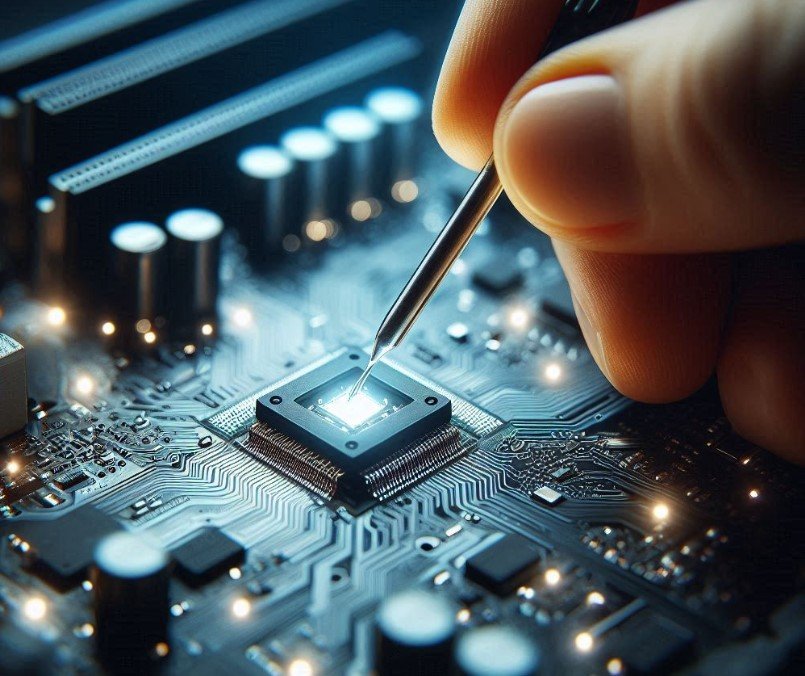
Check RAM Compatibility
Make sure your motherboard and the RAM modules you installed are compatible. To verify the supported RAM kinds, speeds, and configurations, see the motherboard manual or the manufacturer’s website.
Reseat the RAM
Remove the RAM modules from the memory slots after unplugging the power supply and turning off your computer. Then, insert them again into the slots to ensure they are securely seated. The retention clips on the sides of the slots should hold the RAM modules firmly in place.
Test Individual RAM Modules
Try starting the computer with each RAM module fitted separately if you have more than one installed. Test each RAM module in each memory slot after removing all except one. This can help in understanding whether the issue is with an exacting module or memory slot.
CMOS clarity
Clear the CMOS settings on the motherboard to their original settings. You can accomplish this by either removing the CMOS battery for a short while and then reinstalling it or by utilizing the CMOS jumper on the motherboard. Clearing the CMOS resolves any improper or contradictory settings that might be influencing the RAM.
Check Power Connections
Verify that the RAM modules and the motherboard are always securely powered on. Also, check twice that the power wires connecting the motherboard to the power supply unit (PSU) are securely fastened.
Update BIOS
Check the website of the motherboard maker to see if there are any BIOS updates for your model. If so, update the BIOS by downloading the most recent version and following the manufacturer’s instructions. BIOS upgrades occasionally provide stability or compatibility updates for RAM.
Test with Known Good RAM
To determine whether the RAM modules are the problem, see if you can use or borrow a known-to-be-good module from another machine. This can assist in figuring out whether the issue is RAM-specific or stems from another source.
Contact Manufacturer Support
Try the preceding solutions first, and if the problem still exists, contact the motherboard manufacturer’s support for more help. They can assist you in troubleshooting the DRAM LED issue and offer particular assistance based on your motherboard’s model.
If you feel uneasy carrying out these troubleshooting steps independently, we advise obtaining help from a competent professional who can identify and resolve the issue.
Why Is My Monitor Blank When There Is A White Light ON Motherboard?
The following possible issues could be the source of the problem you are describing:
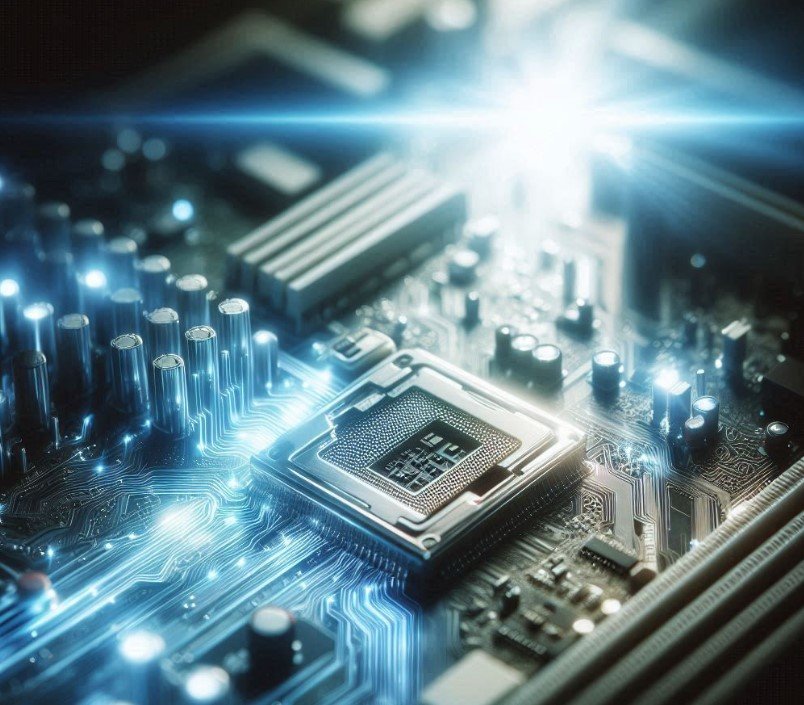
- Graphics card malfunction: The white VGA light on the computer means there is a problem with the graphics card. However, the boot light briefly turning green suggests that the system could adequately complete the POST (Power-On Self-Test), ruling out a motherboard or graphics card failure.
- An unstable GPU connection: If the green boot light appears after removing and reinserting the graphics card, it’s possible that the GPU was incorrectly positioned in the PCIe slot. Make sure the card is inserted safely and securely.
- Compatibility problems: The motherboard or other system parts and the graphics card may not be compatible. Verify that the GPU meets your system’s requirements.
- Problems with the power supply: The system may only boot up properly if the graphics card is receiving enough power from the power supply. Make sure your power source is operating appropriately and has enough watts.
- BIOS/firmware problems: The system may not correctly detect the graphics card due to a BIOS or firmware issue. If it is available, update the BIOS to the most recent version.
EZ Debug CPU White LED Light On And No Display
Verify the motherboard’s EZ Debug LED indicators’ debug status: The associated LED indication will stay on when linked hardware faults happen throughout the system’s booting process, making it easy to identify the failure site.
White Light On Motherboard For VGA On EZ Debug
There might be a problem with the B450 Plus Max M2 Pro motherboard and your Ryzen 5 5600 processor. There are several potential reasons why there might not be any video output from the computer, as shown by the white light on the VGA light.
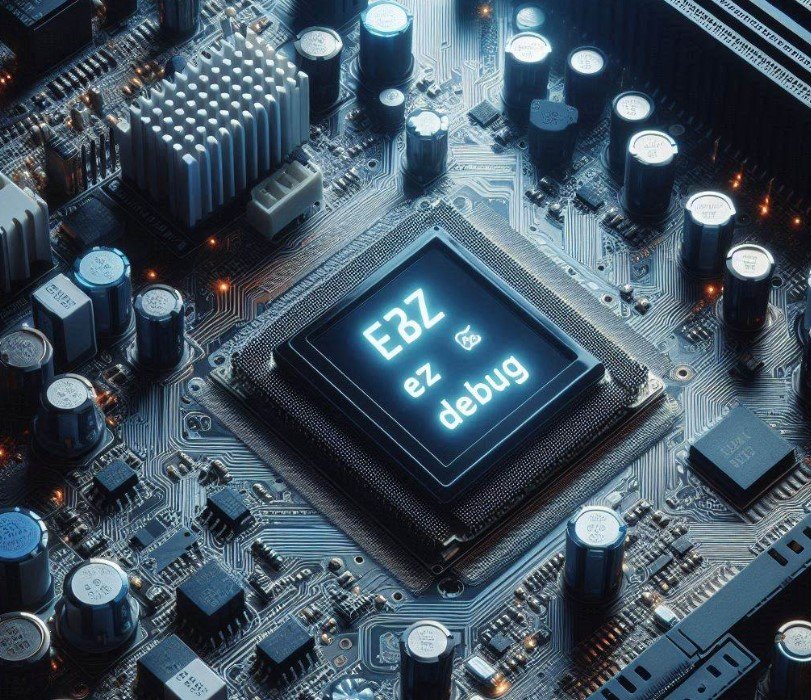
A few possible explanations are a motherboard and processor incompatibility, an issue with the power supply or connector, or a problem with the graphics card or other components.
Checking the power supply to ensure it gives the system enough power would be the next step if you have already replugged all the wires and ensured they are sitting correctly. If that doesn’t fix the problem, contact the motherboard or processor maker for more help.
Motherboard Stuck On VGA Led On EZ Debug
These are some ideas for resolving this problem.
- Shut down the power.
- Turn off the PSU’s rocker switch.
- Unplug the video card; 4. Take out the CMOS battery
- Hold off for ten to fifteen minutes.
- Put the CMOS battery in.
- Applicable only if you have onboard video— use solely onboard video while excluding VGA for testing and troubleshooting.
- Use the VGA in the test.
First Build-EZ Debug VGA Led-No Signal To Monitor
If your case has a transparent side panel, there is something you can try. Try booting and looking around the motherboard for some flashing lights or a number displayed on the motherboard. It’s best to remove the side panel and look for something like this.
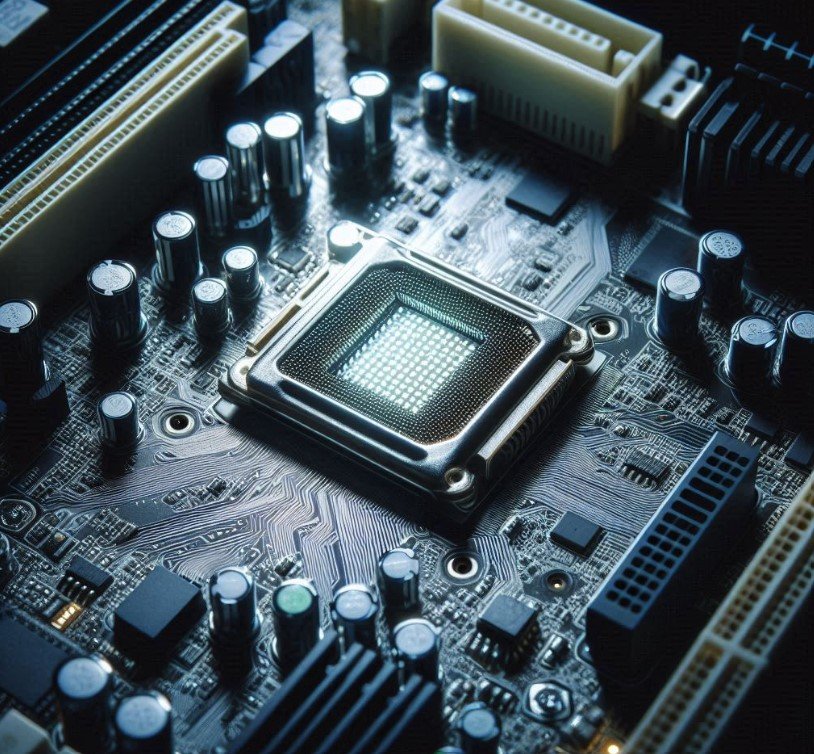
Once you’ve done that, you can look up your manual’s error code or search for “your mobo manufacture” + “error code” on Google. You can disconnect and replug your VGA cable to try again if there isn’t an error code. Additionally, make sure your monitor is turned on.
ASUS TUF GAMING B550M Plus- White Light
On occasion, the ASUS motherboard will beep once during startup, then three times while booting, and the white light LED will remain on. The problem is related to the GPU after some web investigation.
The white LED indicator will stay on the entire operating time, but it usually starts up without any problems. I recently learned that the motherboard’s white LED indicator illuminates and beep codes sound when you switch on the PC without the HDMI cord plugged in.
All right, good. That was something I worked out. When you plug it back in, there won’t be any beep noises or a white LED signal.
PC Boots But Sometimes Gets Stuck With White LED on Motherboard
No, the reason the white LED remains on during bootup is limited to the motherboard’s initial test to determine whether or not it can show video. The display test will fail, and the white LED will remain on if your PC is turned on with your TV or monitor turned off.
The computer will continue to boot normally. The white LED serves as an indicator just for that first test. Assuming your display is operational when turned on and connected correctly, your TV or monitor should operate as intended when you turn it on.
When you turn on your computer, your TV or monitor should be turned on or asleep to prevent the white LED from staying on after launch. If you’re using a TV, you might also need to adjust it to the correct channel or input.
Regarding the white LED, connecting it to DP or HDMI makes no difference. Through whatever is linked, the display test will send out a signal. Complete the test means you can stop using the permanent white LED.
Motherboard Stuck On A White LED (VGA)
The white light, a tiny LED indicator frequently found on the motherboard next to the PCIe slots or the graphics card area, indicates the state of the graphics card or the display output visually. It is associated with the VGA (Video Graphics Array) interface, which is frequently utilized to link screens and monitors to the graphics card.
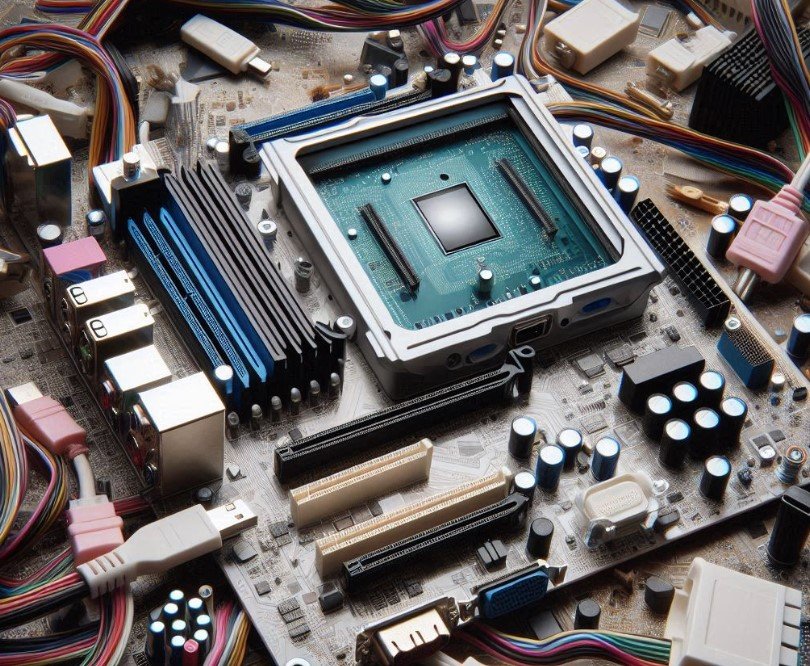
ROG STRIX Z690-A GAMING WIFI D4 GPU White Light Stays On Start Up
When the motherboard’s white light illuminates, it can be interpreted as a sign that there might be underlying issues with the graphics card or the connection between it and the display.
This light indicates that the system has found a problem with one of the VGA-related components. Several situations can lead to the white light’s emergence. For instance, when the system is turned on, there can be no display output, leaving a blank screen or nothing to see.
If the white light is illuminated, users can see distorted or flickering images, artifacts, or aberrant colors instead. Furthermore, the system could become unstable or crash, mainly while doing graphics-intensive tasks like playing games or processing videos.
CPU White Light On Motherboard
If the CPU LED is lit up, there is an issue with your CPU. You should be able to boot up if each light can flash and then move on to the next. Attempt to reinstall your CPU in its socket to see whether there was a mistake.
Ryzen 5000 MSI Whitelight CPU
The BIOS evaluated your CPU, found no RAM installed, and reported that it passed the hardware test. If the White CPU Trouble LED light illuminates and then goes out while the DRAM Trouble LED light illuminates and remains on, your CPU is malfunctioning.
However, if the White CPU Trouble LED remains illuminated even when no RAM is attached, you may have a motherboard or CPU issue. Sometimes, the CPU TROUBLE LED light will remain on if you have installed non-compatibility RAM memory.
Thus, if the DRAM LED illuminates and the CPU LED turns off, and you place a single RAM stick in the A2 DIMM slot, and the CPU LED turns on once more, it would suggest that the RAM is what is turning on the CPU LED.
One technique for determining whether the problem persists or if the CPU can be removed is to install a different CPU in your existing motherboard or replace the CPU in another motherboard that is compatible with it.
Conclusion
The white light on your hardware could mean that there are problems with your graphics card or display output. This guide’s knowledge and troubleshooting skills give you the confidence to fix this issue. Understanding what causes the white light on a motherboard and following the actions can help you fix the white light-causing difficulties.
First, check cable connections and power supply and reset the system. Resetting the graphics card, updating drivers, and checking BIOS updates can also fix the problem. Resetting the CMOS or hiring an expert are advanced troubleshooting solutions.
For more help, use internet forums, manufacturer support websites, and local computer hardware stores. The white light issue must be addressed immediately to maintain system functionality and prevent subsequent issues.
Frequently Asked Questions
What Is The White Mark On My Motherboard?
The white areas are merely remnants of the board’s assembly. The 0.100-pin connectors were soldered by hand, leaving some flux residue on the board. This is typical and does not affect how things operate.
Which color light needs to be on my motherboard?
Usually, a steady orange light means that power is being sent to the motherboard. Some motherboards will always have an orange glow on, and motherboards that won’t.
On my PCB, what is the white dot?
White residues on the board are the main reason for PCB cleaning concerns. Usually, these are salt crystals left over after shoddy cleaning.
My CPU light is on. Why?
The CPU light is the LED that illuminates most frequently. If POST finds any problems with your CPU, such as faulty installations or compatibility problems, it will show up. Among the many reasons why a CPU light might be on are: You should upgrade your BIOS since it is outdated compared to your CPU.






